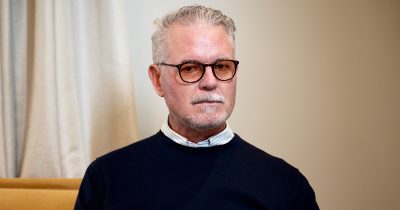
The date was February 1, 2003. The time was 8:59 a.m. EST. Most Americans were unaware a space shuttle was on its way back to Earth. Only those in East Texas who happened to look up in the sky at the right moment may have caught a glimpse of STS-107’s final seconds.
“The Columbia is lost; there are no survivors,” President Bush said in a televised address later that afternoon.
The explosion killed all seven astronauts minutes before they were scheduled to land in Florida.

The crew’s mission was set to begin January 11, 2001, but more than a dozen delays set it back to January 16, 2003.
On January 16, STS-107 launched from the Kennedy Space Center with Rick Husband, William McCool, Michael Anderson, Kalpana Chawla, David Brown, Laurel Clark, and Ilan Ramon onboard.
At T+81.7 a piece of foam nearly two feet long and about a foot wide broke off and struck the reinforced carbon-carbon panels on the shuttle’s left wing. Neither the crew onboard nor ground crew noticed the strike.
It wasn’t until the second day of the mission that anyone realized there had been a debris strike during launch.
The damage was thoroughly assessed and the crew was informed that while a debris strike had occurred previous foam strike events happened and did not result in fatal errors.
STS-107 began its reentry to Earth’s atmosphere at 3:30 a.m. EST on February 1.
It wasn’t until 8:44:09 when Columbia reentered the atmosphere at 400,000 feet that things began to go wrong.
As Columbia crossed over the California coastline traveling at Mach 23 it began to shed pieces of debris. The shuttle’s left wing continued to heat up, a result of the earlier debris strike, as Columbia continued its reentry.
At 8:58:21 a TPS tile fell from the orbiter and landed in Littlefield, Texas. Seconds later the crew received a notification that there was an issue with the landing gear.
The left wing continued to drag, and the crew was unable to correct it.
‘Roger, uh…’
Less than a minute later mission control received their last contact from the crew.
Husband’s radio call, “Roger, uh…” was the last transmission they heard.
Moments later a catastrophic event occurred.
“There was a big trail of smoke and a big flash of light and then several loud booms … just boom – boom – boom – boom – boom,” Randall Sandifer, an employee at a Jacksonville Radio Shack said at the time. “I heard five of them and then saw a lot of blackish-gray smoke.”
“It was a terrible thing to see,” Tyler veterinarian Dr. Steve Wildon said when he spotted the trail of smoke in the sky. “When I heard that, I knew it wasn’t good.”
WFAA, the local news for the Dallas-Fort Worth metroplex, broke into their normal morning programming to cover the disaster.
The debris field spanned hundreds of miles from East Texas through southern Louisiana.
Rescue crews located the remains of the astronauts on the first day and within the first three days some remains from all seven had been recovered.
By February 11, the final body was recovered.
Following the fatal incident NASA suspended the Space Shuttle program. The next mission wouldn’t be until July 26, 2005 when Space Shuttle Discovery went to space.
Unfortunately it too suffered multiple debris strikes during launch, which resulted in NASA once again suspending the Space Shuttle program.
The second return to flight mission took place less than a year later.

It’s hard to believe it’s been 20 years since we lost the entire crew of STS-107. It was a devastating day for our entire country.
Their work and their lives will never be forgotten.




